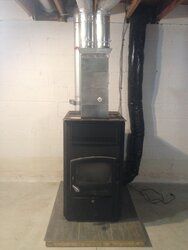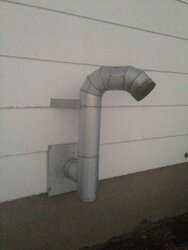Okay, these are the types of threads that 'spark' my interest - no pun intended. Seriously though, a hopper fire is such a rare and serious incident that should be one of the main concerns for every member here. I think the focus of this thread is to understand first, why this has happened and what to do to prevent this in the future?
Smokey, you mentioned that all pellet stoves can have hopper fires. I understand that this is a possibility of course, considering we are all dealing with a combustion machine - but let's face it, with a properly installed stove under the correct circumstances these things just don't 'usually' happen without some sort of key variable like an unmaintained stove, improper venting, etc.?
I find it hard to believe that a company would design a stove that could kill you and your family and burn down your house if it looses power during operation - then again..I just don't know? So, was it inadequate vertical exhaust rise / draft?, something inherent about bottom-feeder pellet design, or what? I too heat from the basement with a similar stove which runs 24/7 and this scenario scares the hell outta me!
Smokey, you mentioned that all pellet stoves can have hopper fires. I understand that this is a possibility of course, considering we are all dealing with a combustion machine - but let's face it, with a properly installed stove under the correct circumstances these things just don't 'usually' happen without some sort of key variable like an unmaintained stove, improper venting, etc.?
I find it hard to believe that a company would design a stove that could kill you and your family and burn down your house if it looses power during operation - then again..I just don't know? So, was it inadequate vertical exhaust rise / draft?, something inherent about bottom-feeder pellet design, or what? I too heat from the basement with a similar stove which runs 24/7 and this scenario scares the hell outta me!



